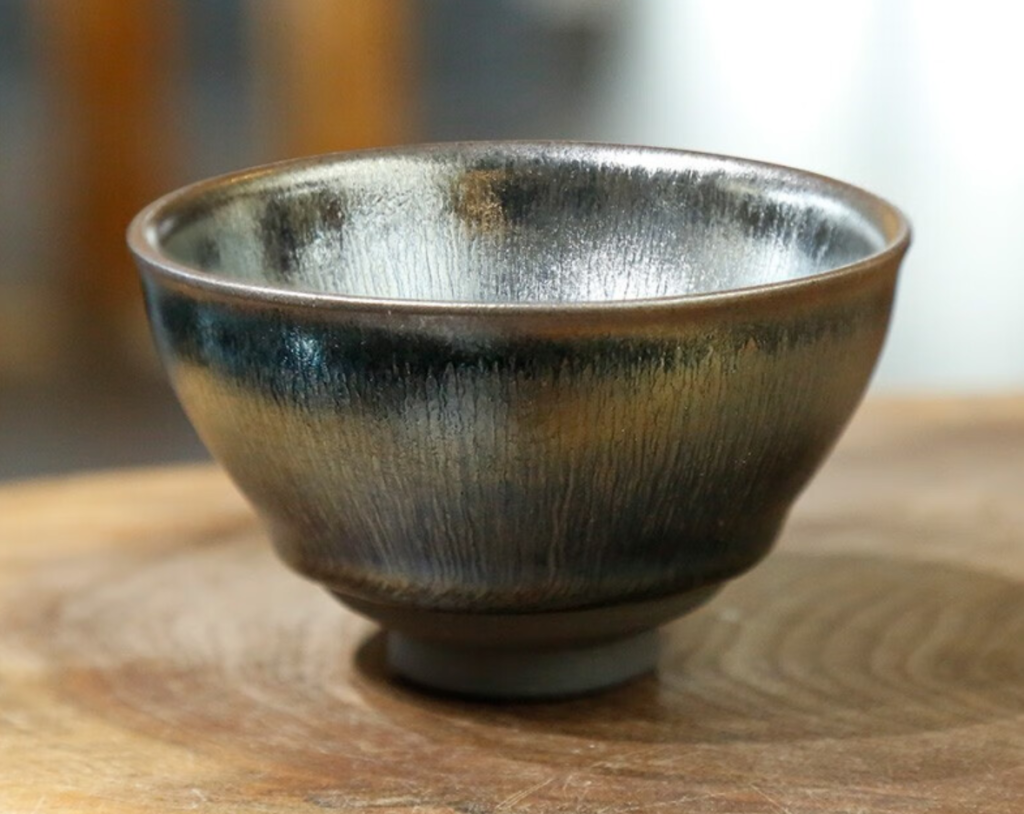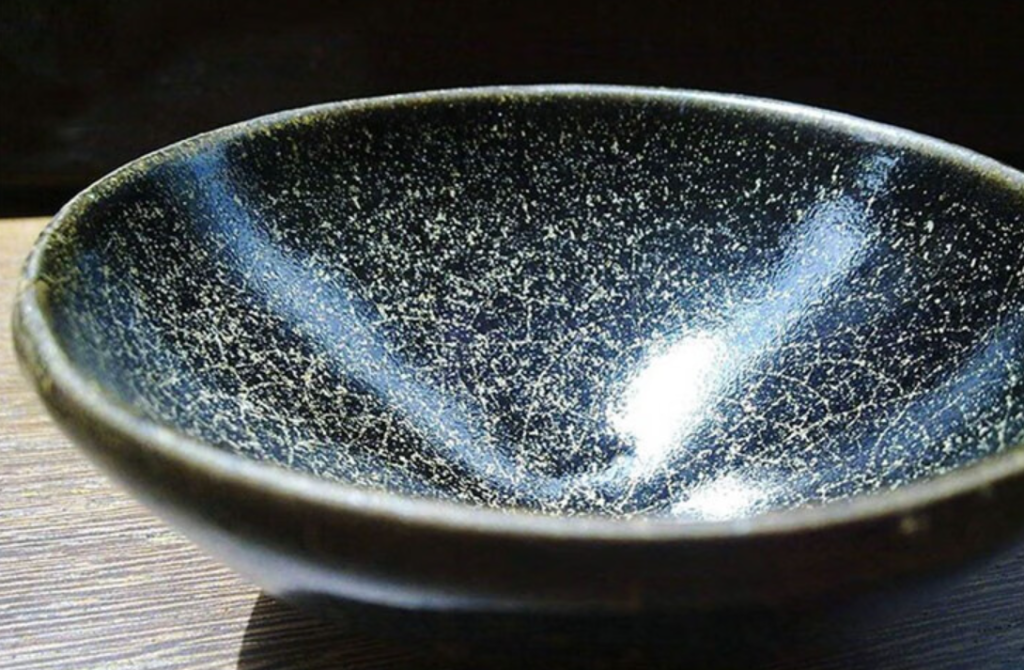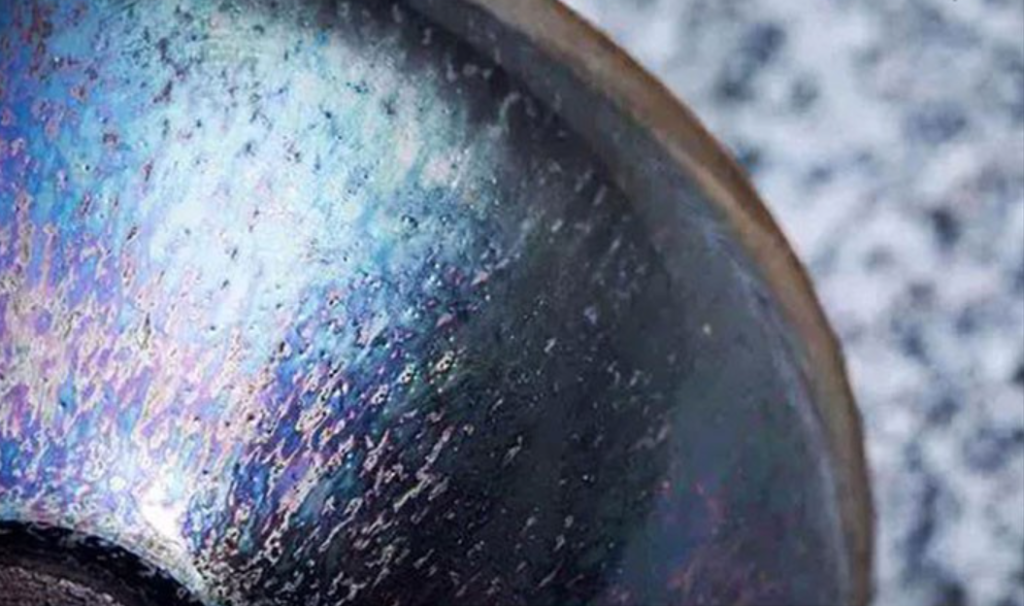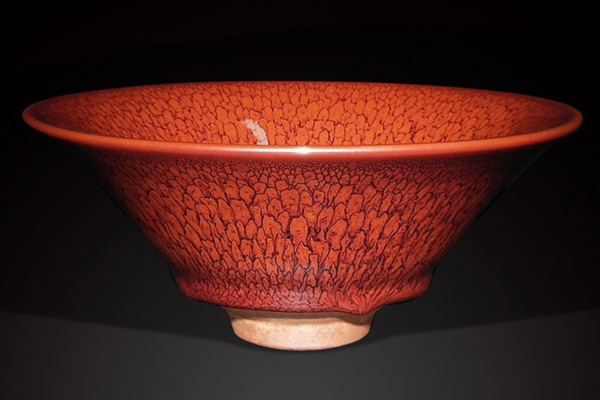The Hare’s Fur Bowl is one of the most representative products of the Jianyao kiln in the Song Dynasty and a treasure of traditional Han Chinese porcelain-making craft. It features even and dense veins showing through its black glaze, which are named for their resemblance to the fine and silky hairs on a rabbit’s body. They are folklorically known as “Silver Hare’s Fur,” “Gold Hare’s Fur,” “Blue Hare’s Fur,” and so on.

Among them, the “Silver Hare’s Fur” is the most precious. Among the magical patterns of Jian bowls, the beautiful Hare’s Fur Bowl is also a rare treasure, especially the Silver Hare’s Fur, which has a strong metallic texture and a prominent relief feel when touched, sparkling silver under the light. Its gentle and jade-like appearance is like a beautiful woman in the mirror, unreachable yet visually delightful, exhibiting unique aesthetic charm and beautiful simplicity.

Cracking is a natural phenomenon that occurs on the glaze surface of porcelain. Firstly, the expansion and contraction rates of the body and glaze of Jian bowls differ. Secondly, since the glaze of Jian bowls is a crystalline glaze, the vitrified surface of the glaze layer is relatively thin. Frequent thermal expansion and contraction of the tea ware will contribute to the formation of cracks. The cracking of porcelain is a lengthy process, and it is normal for newly purchased porcelain or porcelain that has been used for a long time to exhibit cracks. Please use it with confidence.

The material and craftsmanship of Jian bowls determine the presence of pores. The bodies and glazes of Jian bowls contain a higher iron content than other types of porcelain. During the high-temperature firing process of Jian bowls, the iron in the body gradually precipitates out, and the pores are left behind by this precipitation. Therefore, the pores in Jian bowls are a normal phenomenon. The presence of pores does not affect the integrity of the glaze surface or daily use. On the contrary, these pores are “added bonuses” as they can adsorb some particles, reduce the hardness of water, and make the tea softer and mellower.




